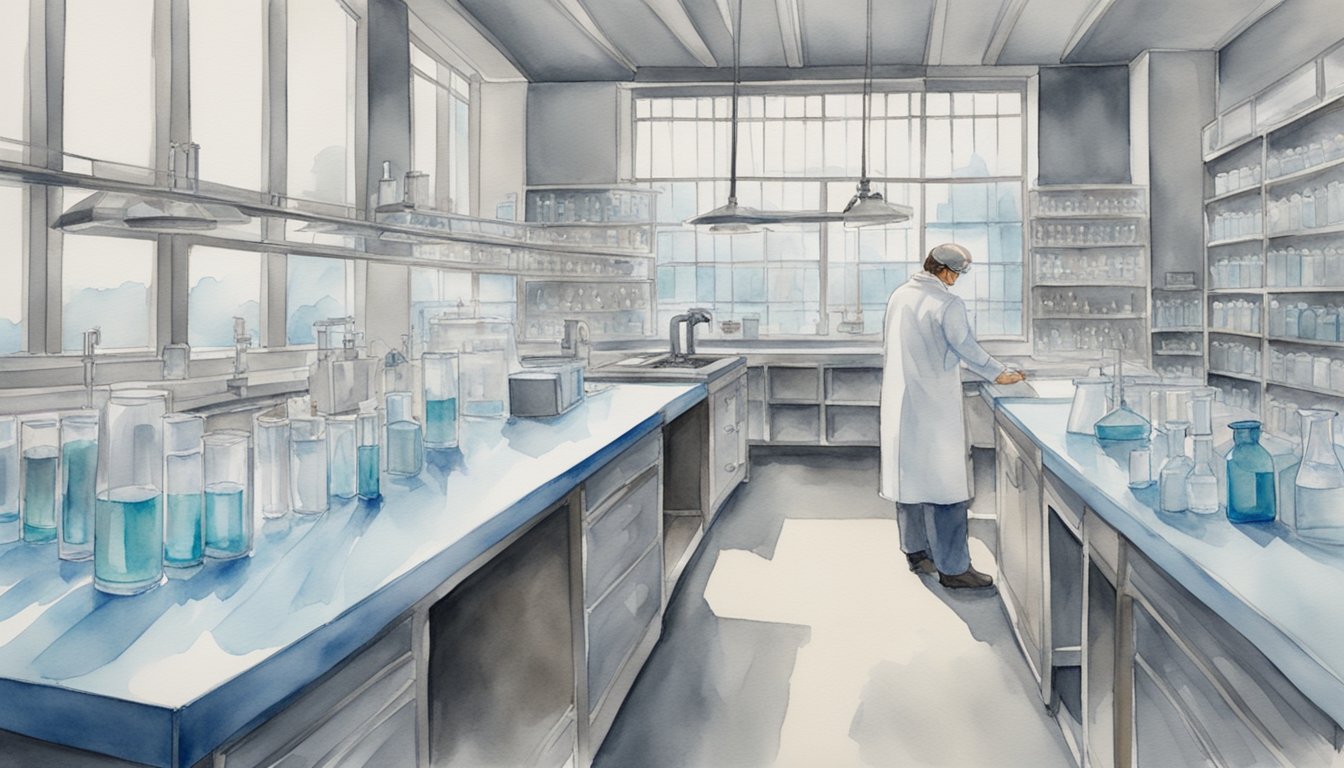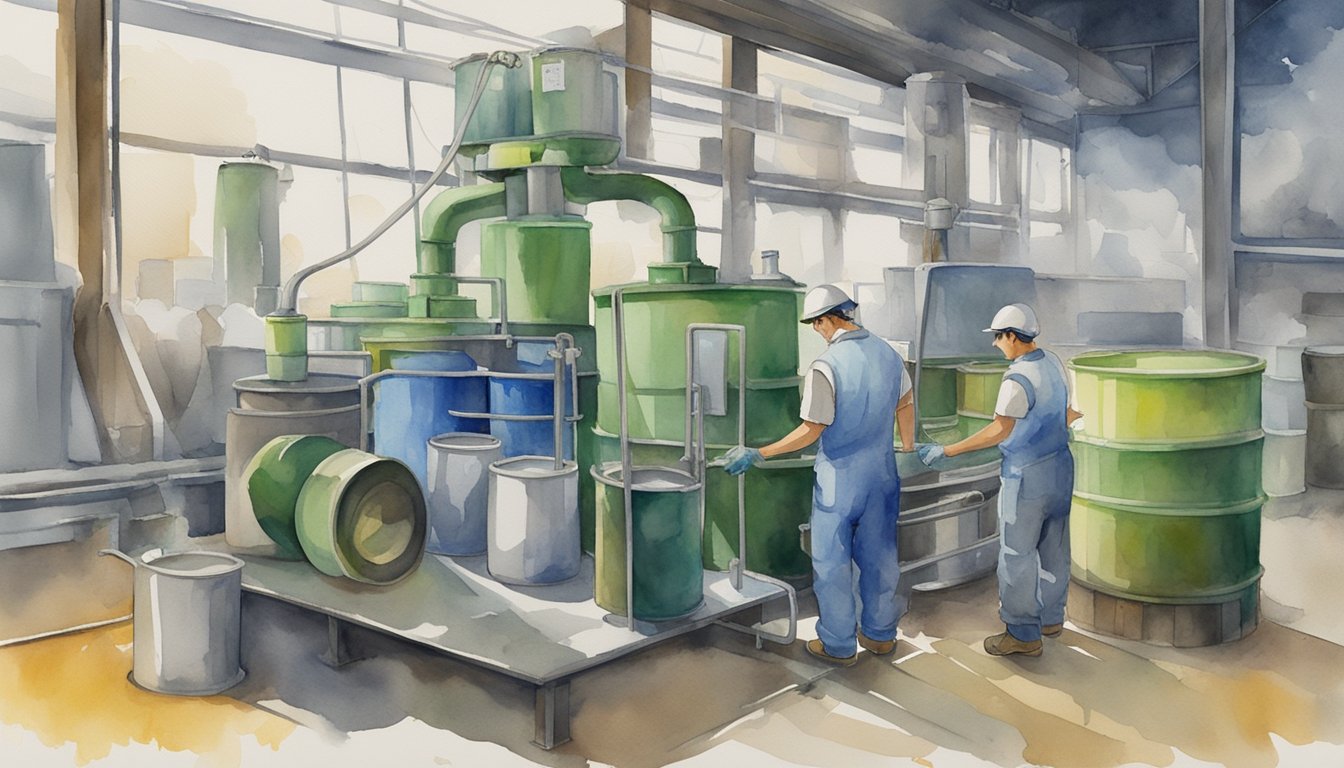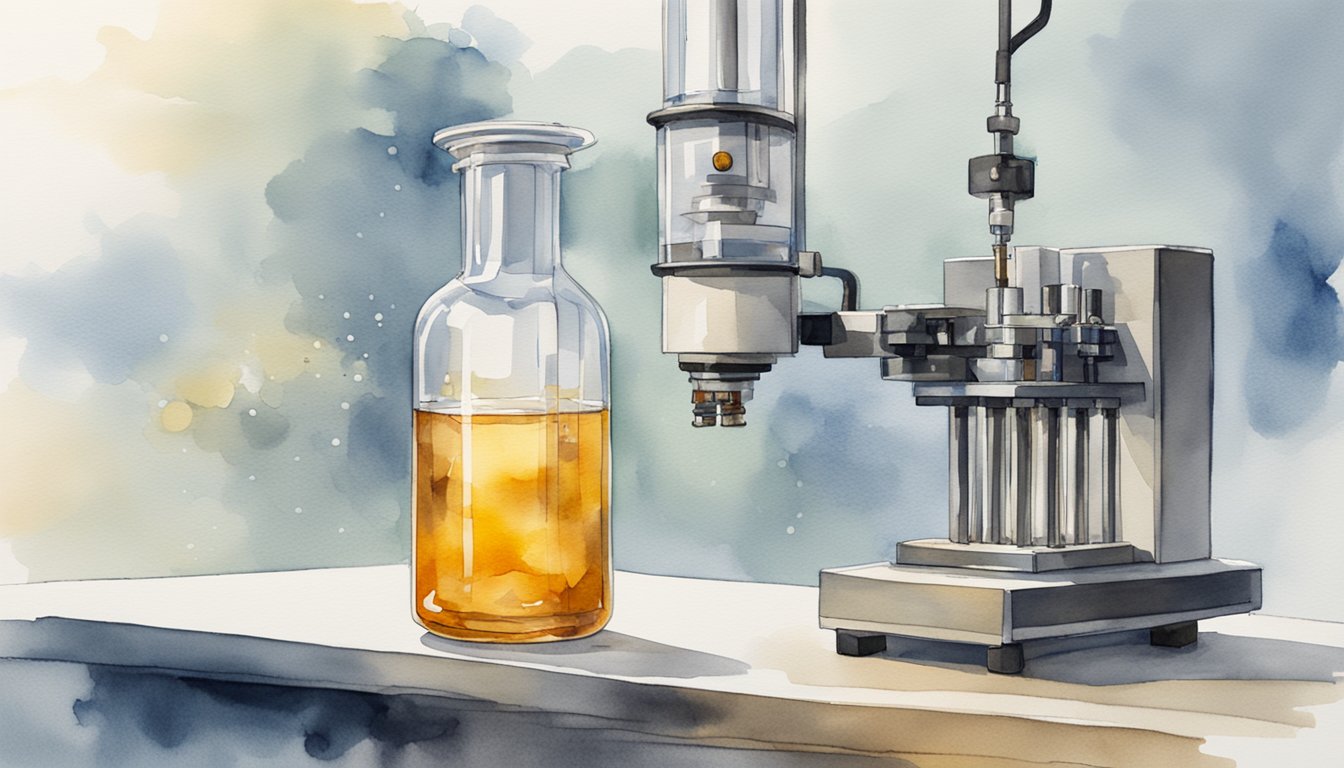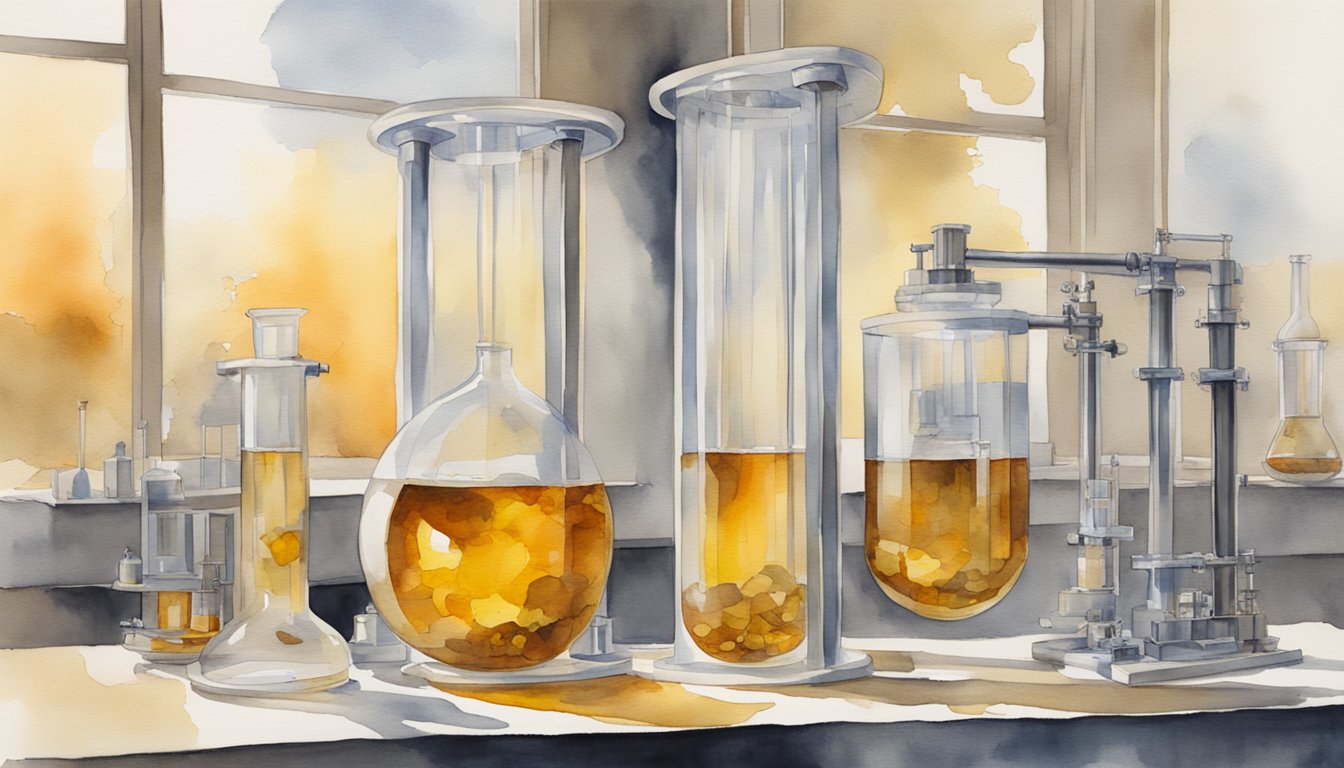Every solvent used for Liquid Chromatography (LC) and Mass Spectrometry (MS) has a UV absorbance to consider. Choosing a low UV absorbance may minimize baseline noise, increase sensitivity, and improve a UV detector’s performance. However, other mechanics may change depending on your solvent’s properties or vice versa. Different wavelengths may be of interest for your testing purposes, while chemical compatibility with your system may be more or less necessary. Using solvents with low particulate contamination can also lead to better UV detection results. Like most HPLC or LC-MS analyses, there are many trade-offs to contemplate, and studying UV absorbance will help sharpen your knowledge of solvents, their interactions, and how to modify them to create better testing in the future.
UV Absorbance and Detection Principles
In the simplest terms, UV absorbance refers to the capability to reflect or absorb light. Every element or compound produces unique wavelengths that can then be studied. For testing methods like mass spectrometry and UV spectroscopy, measuring light spectrums, intensity, and radiation are some of the fundamental principles for their analysis. Depending on the chemical interactivities between a solvent and a sample along with other system components, UV absorbance becomes a compelling tool to understand what elements and their abundance may be in complex matrices.
UV-Vis Spectroscopy and Liquid Chromatography
UV spectroscopy is a method that measures the absorbance of UV by a substance, governed by the Beer-Lambert Law. This law describes the linear relationship between absorbance and concentration, using the formula: A = εlc, where ( A ) is absorbance (unitless), ( ε ) is the molar absorptivity with standard units of L/mol-cm, ( l ) is the path length with standard units of cm, and ( c ) is the concentration with standard units of mol/L.
For liquid chromatography methods like LC-MS, HPLC, or HPLC-UV, UV detectors measure light absorbance at certain wavelengths, typically between 190 and 400 nm. This range covers both the visible and UV spectrum, allowing for a precise wavelength selection. UV detectors also use principles from the Beer-Lambert Law to quantify certain quantifications of a specific analyte.
Role of Solvents in UV Detection
Since solvents are typically used to carry analytes through a liquid chromatography system, their UV absorbance properties are just as important to consider. Otherwise, they can meddle with the results you wish to study, for certain solvents that demonstrate strong UV light absorption often disrupt analyte detection processes.
Common solvents like methanol and acetonitrile are applied in HPLC due to their predictable cutoff values (methanol: ~205 nm, acetonitrile: ~190 nm) while maintaining compatibility with several stationary phases. However, solvent absorbance close to the detection wavelength can disrupt signals that are being analyzed. Also, contaminants create misleading feedback or unaccounted interference. These reasons further emphasize why high-purity solvents with low UV absorbance are typically the most ideal choices.
UV Considerations for Solvents
When selecting a solvent, consider how UV absorbance may affect UV detectors, which rely on solvent transparency at specific wavelengths. Additionally, take into account the several properties that may change with UV absorbance, such as polarity and chemical interactivity with the stationary phase, impacting chromatographic separation processes.
Solvent UV Cut-Off and Transparency
UV cut-off expresses the range within a solvent’s UV absorbance that may impact detectors, while transparency reflects ranges where UV light may pass through. Solvents with a low UV cut-off often increase transparency, which are reasons why they are ideal choices for minimizing light interference.
Acetonitrile and methanol represent common solvent choices because they provide high transparency. Their UV cut-off points measure approximately 190 nm for acetonitrile and 205 nm for methanol. Many organic solvents exhibit a wide transparency range suitable for multiple chromatography techniques. However, you should always verify the lot-to-lot variability of solvents, as it can affect UV detection when working near the cut-off wavelength.
Solvent Polarity Influences
The separation effectiveness in chromatography depends on how solvent polarity influences analyte distribution between the stationary and mobile phases. The polarity of the solvent controls interactions that establish elution strength and selectivity factors column adsorption, which ultimately govern performance. The behavior of polar solvents like methanol and water interact differently compared to non-polar solvents, which impacts their retention and separation capabilities.
Normal-phase chromatography often uses non-polar solvents like hexane to create strong interactions between polar analytes and a stationary phase. In reversed-phase chromatography systems, polar solvents aid in retaining non-polar analytes. Adjusting the ratios of solvents in the mobile phase alters its polarity, which impacts both elution strength and selectivity. Accurate retention and resolution, along with reliable analytical results, rely on proper process optimization.
Solvatochromic and Stabilization
Applying a solvent will directly influence the UV absorbance of analytes. Certain interactivities can create solvatochromic effects, which is a phenomenon known for altering the UV-visible spectrum as certain analytes dissolve into particular solvents. Sometimes this changes their color, but it especially impacts those with conjugated systems or specific functional groups.
Additionally, both polar and non-polar choices can create stabilization effects and skew UV wavelengths in different directions. Polar solvents can stabilize excited states in carbonyl-containing compounds, leading to a shift in UV absorbance and longer wavelengths. On the other hand, non-polar solvents can stabilize ground states in aromatic compounds, shifting UV absorbance to shorter wavelengths.
Balancing Solvents and UV Performance
Balancing UV absorbance factors like UV cutoff and transparency with solvent properties like polarity, viscosity, volatility, and pH can vary from case to case and may require modifications or mixtures for a suitable composition. To match your solvent’s UV range with other samples and testing factors, consider the following for chromatography and spectroscopy techniques:
Adjust polarity by creating precise mixtures of different solvents. This can help resolve closely eluting compounds, especially in complex samples.
Balance pH with buffer salts to facilitate separation while maintaining a stable pH level for consistent retention times.
Control viscosity while dissolving samples and preparing mobile phases. This will ultimately impact your flow rate, column efficiency, and pressure limits.
Check for chemical stability between testing materials, including your sample composition, choice of column, and packing material. Stability improves repeatability and reliability from test to test. Avoid adverse reactions from volatile solvents and implement safety protocols for handling hazardous materials.
During your selection, consider functional groups in your analyte. For example: in reverse-phase chromatography, small amounts of polar or mixed-polarity solvents like water can be combined with methanol or acetonitrile to modulate the retention and elution of non-polar molecules. The mobile phase composition balances polarity to optimize analyte partitioning between the non-polar stationary phase and the solvent system for efficient separation. This helps prevent issues like peak broadening or tailing when sample mixtures are incompatible with mobile phase solvents, leading to incomplete separation or retention time shifts and affecting results.
Analyte-Solvent Compatibility
Solvents that do not significantly overlap with an analyte's UV absorption are best for clear signal interpretation, and minimizing particulates and volatile additives can prevent issues with background absorbance and enhance detection sensitivity. Solvents with high UV transparency are ideal, as they allow accurate measurement of analytes with minimal interference. This is also known as molar absorptivity, which relates wavelength to the ability to absorb light. Low molar absorptivity corresponds to high transparency.
UV Absorbance with Complex Mixtures
For methods like high-performance liquid chromatography (HPLC), analyzing complex mixtures can become complicated and require precise methodologies for analyzing wavelengths. Choosing a specific UV range as a parameter can significantly reduce the potential variables of other compounds. With more knowledge about your analytes, you can focus on even more particular ranges that will produce the absorbance maxima (highest peaks) most relevant to your results.
Baseline stability can also present new challenges when assessing complex mixtures, such as pharmaceutical or biological compounds. Methods like gradient elution can adjust separation parameters during a test to compensate for multiple attributes present in a matrix. Employing more advanced equipment and UV detectors with higher sensitivity can also significantly improve sensitivity and produce better peaks and adjust band broadening.
Conclusion
UV absorbance is one of the fundamental attributes for any analytical method that involves observing a light spectrum, especially for UV spectroscopy, mass spectrometry, and different types of chromatography. Since solvents carry samples through these different tests, its UV cutoff and transparency can either improve your peaks or create misleading results. Moreso, a solvent’s other properties outside UV absorbance may impact several other interactions within your system that should be accounted for or adjusted while testing.
There is always more to learn about when it comes to HPLC and LC-MS solvents. To expand your knowledge on other solvent properties and testing techniques, explore our information available at Birch Biotech.
References:
[1] How it works: UV detection for HPLC. (2020, November 13). Chromatography Online. https://www.chromatographyonline.com/view/how-it-works-uv-detection-hplc-0
[2] Taylor, T. (2020, November 12). Important aspects of UV detection for HPLC. Chromatography Online. https://www.chromatographyonline.com/view/important-aspects-uv-detection-hplc
[3] SMACgig World. (2023, May 31). Nature of factors impacting UV-VIS spectroscopy. https://www.smacgigworld.com/blog/factors-affecting-uv-vis-spectroscopy.php
[4] Wysocki, J., & Dong, M. W. (2022, April 15). Ultraviolet Detectors: Perspectives, principles, and practices. Chromatography Online. https://www.chromatographyonline.com/view/ultraviolet-detectors-perspectives-principles-and-practices













